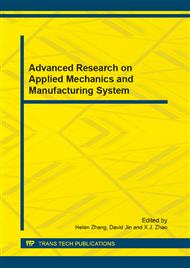p.285
p.289
p.293
p.298
p.302
p.306
p.310
p.315
p.319
Visual Detection of Machining Damage on Aerospace Aluminium Alloys during Manufacturing Process
Abstract:
In aerospace industry, chromic acid anodizing (CAA) has been traditionally used as a non-destructive testing (NDT) technique to detect flaws in aluminium alloys. However, with the increasing restriction on the use of chromic acid and the application of lithium-containing aluminium alloys to aircraft structures, the capability of anodizing as a NDT method is challenged. In this work, machining damage was deliberately introduced to an Al-Li-Cu alloy AA2099-T8. Then, the visibility of the machine damage after tartaric-sulphuric acid anodizing (TSAA), which is an environmentally friendly anodizing process, was studied. It is suggested that, with proper lighting condition, it is possible to replace CAA with TSAA for detecting machining damage on lithium-containing aluminium alloys during manufacturing.
Info:
Periodical:
Pages:
302-305
Citation:
Online since:
December 2012
Authors:
Keywords:
Price:
Сopyright:
© 2013 Trans Tech Publications Ltd. All Rights Reserved
Share:
Citation:


